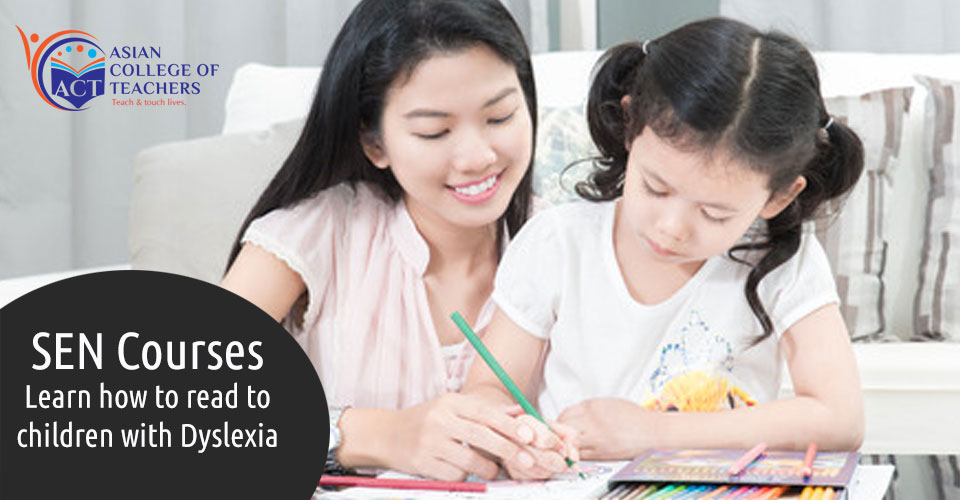Learning How to Read To Children with DYSLEXIA
17th November 2017

Before going deeper into the blog, first, we need to know what exactly Dyslexia is. It is a type of learning disability related to reading. Kids affected by dyslexia face trouble in reading accurately and smoothly. They may also face trouble in reading comprehension, spelling and writing. Raising a child with dyslexia is a tough journey. While dealing with a child who is suffering from it, you will gain a lot of knowledge about the challenges with reading and about the many ways you can help him/her succeed at school and in daily life. Although it is not known as what percentage of kids have it, still it is considered to be the most common learning issue. Special educators with DYSLEXIA and experts believe the number is between 5 and 10 percent. Getting a SEN Training helps in assisting the kids from a day to day basis. Kids with dyslexia may have trouble answering questions about something they’ve read. But when it is read to them, they may have no difficulty at all. So, how to engage dyslexic kids into reading?
Among many other ways, the Multisensory instruction is a way of teaching that engages more than one sense at a time. For kids with reading issues like dyslexia, the use of sight, hearing, movement and touch can prove beneficial for learning. Let us go through some of the ways in which kids can be taught reading in a fun and creative way.
· Writing on Sand or Shaving Cream
This activity with sand or shaving cream allows students to use the senses of sight, touch and sound to connect the letters with their sounds. Kids need to start with a handful of sand on a cookie sheet or a dollop of shaving cream on a table. Then they spread out the sand or shaving cream and use their finger to write a letter or word in it. As they write, students say the sound each letter makes. They then blend those sounds together and read the whole word aloud.
· Building Words
Building words can be done with the help of alphabet tiles or magnetic letters. The activity includes the use of colour-coded tiles in a varied way to help kids connect sounds with letters. They can also use magnetic letters in which vowels and consonants are differently coloured. Students say the sound of each letter while laying it down and they read out the word when they’ve completed building it.
· Read, Build and Write
This technique to teach sight words can be done with a group or one-on-one. Students have a piece of paper with three boxes drawn on it and are labelled ‘Read, Build, and Write’. They also have cards with sight words, magnetic letters or tiles and a marker. Students and the teacher read the sight word that’s in the ‘Read’ box. Then they build the word in the ‘Build’ box, using the letters. In the end, they practice writing it in the ‘Write’ box. While reading together with a SEN teacher, students may be handed a stick and asked to answer the question on it. Or they may be asked to highlight the elements of a printed story using the proper colours.








